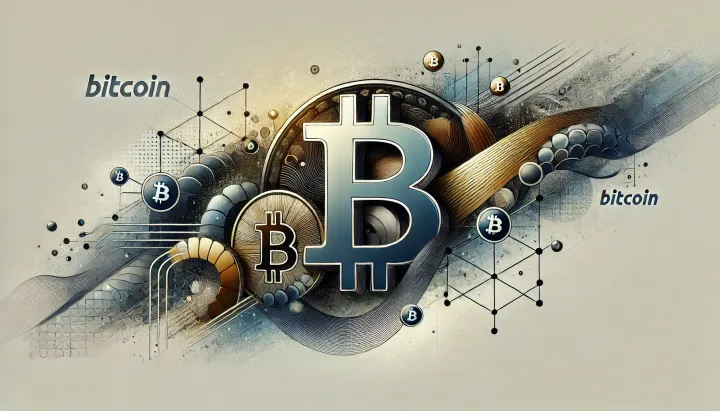Broken Money, Dedollarization, and the AI–Energy Shift
The September 08, 2025 episode of Magsplaining features Lyn Alden explaining how centralized ledgers created “broken money” by allowing debasement and surveillance once communications outpaced settlement.

- My 'briefing notes' summarize the content of podcast episodes; they do not reflect my own views.
- They contain (1) a summary of podcast content, (2) potential information gaps, and (3) some speculative views on wider Bitcoin implications.
- Pay attention to broadcast dates (I often summarize older episodes)
- Some episodes I summarize may be sponsored: don't trust, verify, if the information you are looking for is to be used for decision-making.
Summary
The September 08, 2025 episode of Magsplaining features Lyn Alden explaining how centralized ledgers created “broken money” by allowing debasement and surveillance once communications outpaced settlement. She identifies Bitcoin as a digital-speed settlement layer that could reduce reliance on dollar-centric finance. The discussion connects dedollarization, U.S. fiscal dominance, corporate treasuries, CBDCs, and AI–energy infrastructure to questions of sovereignty and resilience.
Take-Home Messages
- Settlement Mismatch: Telegraph-era speed without fast settlement centralized ledgers, enabling debasement and surveillance.
- Dollar Network Effects: Pricing, FX routing, reserves, and debt entrench reliance, though seizure risk drives marginal flows to gold and Bitcoin.
- Fiscal Dominance: Structural U.S. deficits and rising interest costs export volatility, leaving dollar debtors vulnerable.
- Treasury Strategy: Corporations issue fiat liabilities to acquire scarce assets like Bitcoin, deepening liquidity but raising governance concerns.
- AI–Energy Geography: Cheap power and clear rules form moats for mining and data centers, concentrating compute and settlement capacity.
Overview
Lyn Alden situates the origins of “broken money” in the telegraph era, when fast communication lacked fast settlement, concentrating finance into centralized ledgers. That structure enabled efficiency but also empowered states and banks to debase rapidly and surveil transactions. She describes Bitcoin as a foundational fix, delivering irreversible settlement at digital speed.
She emphasizes the four pillars of dollar dominance: invoicing, FX routing, reserves, and debt issuance. These mechanisms force emerging markets to absorb volatility from dollar hardening and debasement cycles. Alden characterizes this as monetary neocolonialism that undermines development and autonomy.
States are diversifying reserves by repatriating gold and reducing Treasuries, especially after asset seizures in recent crises. Large economies experiment with new settlement pathways, while smaller nations explore Bitcoin as both an asset and a payments rail. Strong-dollar cycles continue to suppress foreign Treasury demand, reinforcing the turn to alternative stores of value.
Alden warns that U.S. fiscal dominance is entrenched by demographics, health-care costs, financialization, equity-linked revenues, and higher interest expense. Loose fiscal policy combined with tight monetary policy simultaneously debases savers and squeezes debtors worldwide. She notes corporations exploit this regime by issuing debt to accumulate scarce assets, with Bitcoin now part of treasury strategy, while CBDCs heighten risks of surveillance money.
Stakeholder Perspectives
- Emerging Market Policymakers: Reduce dollar mismatch, diversify reserves with gold and Bitcoin, and preserve liquidity buffers.
- U.S. Fiscal/Monetary Authorities: Manage deficits and interest expense without destabilizing global markets.
- Corporate CFOs/Boards: Evaluate Bitcoin allocations within treasuries while addressing volatility, disclosure, and governance.
- Energy/Grid Operators and Miners: Align cheap energy and grid stability with mining and data center demand.
- Civil Liberties and Regulators: Balance enforcement with protection of privacy-preserving, permissionless payment systems.
Implications and Future Outlook
Dedollarization will be gradual given entrenched network effects, but seizure risk and fiscal dominance push marginal reserves into gold and Bitcoin. Hybrid reserve structures and bilateral settlement pilots are likely to expand. Jurisdictions offering legal clarity for open settlement rails will attract capital and trade.
Compute and energy are emerging as determinants of monetary geography, with AI and mining co-locating in cheap, reliable power markets. Operators able to integrate with grids and support infrastructure will capture long-term advantages. Policymakers that link energy build-out with digital settlement can convert volatility into resilience.
Corporations will keep arbitraging fiat liabilities into scarce assets, embedding Bitcoin further into treasury practice. Broader access via ETFs and audited custody will accelerate this, though concentration and governance risks remain. CBDC experimentation will highlight contrasts between surveillance money and permissionless settlement, making privacy a decisive policy issue.
Some Key Information Gaps
- How does dollar hegemony perpetuate monetary neocolonialism in emerging markets? Clarifying channels can guide reserve diversification and debt strategy.
- What adoption pathways could make Bitcoin a widely used settlement layer? Mapping routes helps prioritize infrastructure, liquidity, and legal frameworks.
- How will persistent U.S. fiscal dominance affect global financial stability? Stress-testing spillovers informs sovereign risk management and contingency planning.
- What long-term impacts will corporate Bitcoin treasuries have on volatility and governance? Assessing dynamics guides disclosure norms and systemic oversight.
- How might CBDCs alter citizen privacy and economic autonomy across jurisdictions? Evaluating trade-offs informs rights-preserving payment policy and legal safeguards.
Broader Implications for Bitcoin
Monetary Realignment Beyond a Single Reserve
Reserve strategies may evolve into diversified stacks of gold, Bitcoin, and regional currencies to hedge seizure and debasement risk. This would not eliminate the dollar but dilute unilateral control over global liquidity. Such diversification could dampen contagion while complicating coordination in crises.
Hybrid Settlement Architectures
Countries may pair Bitcoin’s settlement layer with local-currency invoicing and hedging to lower FX and sanctions exposure. This model reduces dependence on correspondent banking chokepoints. Scaled use would require standardized custody, insurance, and transparency mechanisms.
Compute–Energy Mercantilism
Nations with abundant cheap energy and permissive rules will attract AI and mining demand, exporting compute while importing capital. These hubs can stabilize grids and fund generation but face environmental and infrastructure constraints. Competitive policy will hinge on reliability guarantees and interconnection capacity.
Corporate Balance-Sheet Activism
If treasuries normalize scarce-asset hedging, boards will adapt risk and disclosure frameworks to treat Bitcoin alongside gold and T-bills. This may broaden investor bases but heighten stewardship questions in crises. Rating agencies and auditors will need methods for digital-asset collateral and impairment.
International Law and Asset Seizure Norms
Reserve freezes are reshaping sovereign risk calculations, prompting self-custody and diversification. Without norms or treaties limiting asset seizures, nations will seek seizure-resistant assets and new settlement rails. Formal frameworks could reduce uncertainty and systemic fragmentation.
Machine Economies and Autonomous Agents
AI agents and robots will increasingly transact for services and resources. Permissionless money with programmable escrow can anchor these exchanges, with Bitcoin providing settlement finality. Governance challenges will revolve around liability assignment, auditability, and safe defaults for automated payments.



Comments ()